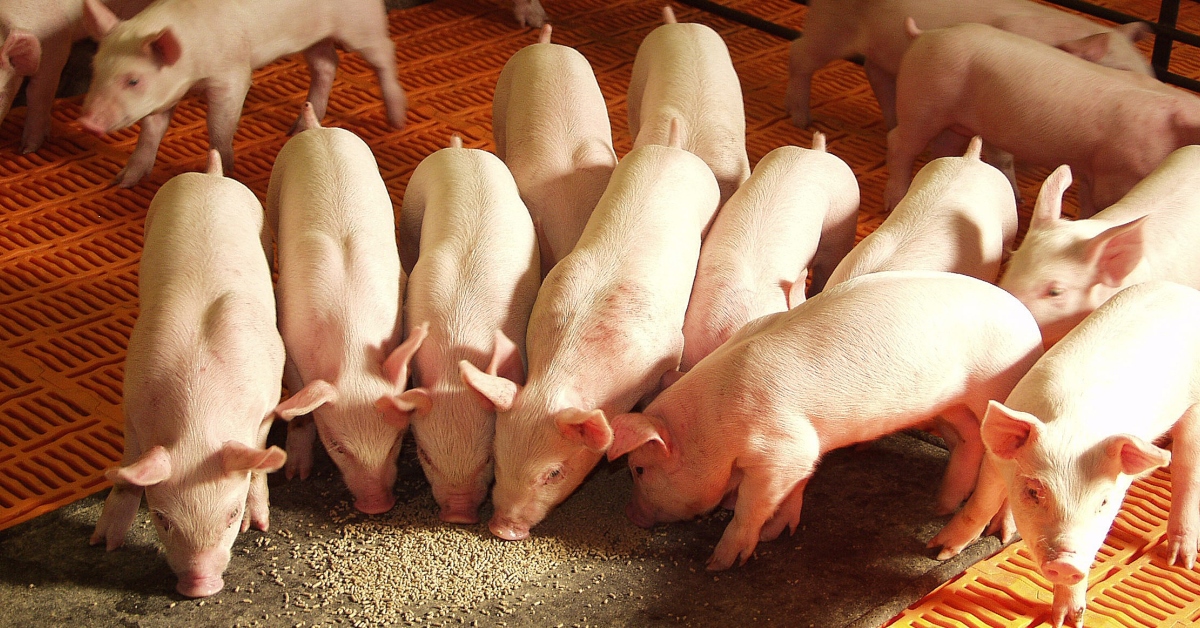
To further refine and more closely match the growing pig’s nutrient requirements, producers can also implement split-sex feeding in conjunction with phase feeding. It has been well-documented that barrows and gilts do not follow the same growth pattern and have different lean deposition rates from approximately 70 pounds body weight to market weight. Barrows tend to gain weight faster and put on muscle at a slower rate than their gilt counterparts. Consequently, barrows can be fed diets with lower lysine levels than gilts. This reduces diet cost and nutrient excretion when compared to feeding everyone the same diet. Even though split-sex feeding makes sense in theory, it is more of a logistical challenge than mixed-sex feeding, which may explain why the practice is not widely utilized.
Putting split-sex feeding to the test
At its Leavenworth Livestock Research Center, Hubbard Feeds decided to evaluate split-sex feeding as a part of the finisher portion of a larger wean-to-finish trial that was being conducted (Table 1). Barrows and gilts averaging 65 pounds were split into different pens at the start of the finisher period. In this study, all pigs were on the same feed budget and diet formulations. We observed that barrows had about an 8 percent improvement in average daily growth (ADG) and a 12 percent higher feed intake compared to gilts. The gilts also exhibited an approximately 4 percent improvement in feed efficiency. We also observed differences in lean deposition, with the gilts being about 5 percent leaner, with a 9 percent greater loin depth than the barrows. Our findings corroborate that of previous Hubbard research conducted on split-sex feeding.
|
Table 1. Effects of Sex on Growth Performance of Finishing Pigs
|
||||
|
Sex |
Barrow |
Gilt |
CV |
P< |
|
Cumulative (116.5d) |
|
|
|
|
|
ADG |
2.21 |
2.03 |
3.3 |
.01 |
|
ADFI |
5.38 |
4.74 |
2.3 |
.01 |
|
FG |
2.44 |
2.34 |
3.3 |
.01 |
|
Gain |
252.30 |
241.28 |
3.3 |
.01 |
|
Average Market Wt. |
289.28 |
281.09 |
2.6 |
.01 |
|
Carcass Data |
|
|
|
|
|
Hot Carcass wt. lb. |
211.46 |
212.20 |
7.2 |
.37 |
|
Back fat, inches |
.67 |
.53 |
18.3 |
.01 |
|
% Lean |
56.63 |
59.45 |
3.4 |
.01 |
|
Loin depth, inches |
2.65 |
2.90 |
10.1 |
.01 |
Feeding a lower cost diet — due to lower protein and amino acid levels — to a higher intake animal is economically attractive, especially going into the fall and winter markets. However, producers must also consider any additional costs that may be associated with split-sex feeding, whether monetary or time-related. Producers interested in split-sex feeding can try several different approaches, including:
- Filling an entire barn/site with either barrows or gilts and feeding them accordingly.
- Splitting barrows and gilts into separate pens within the same barn with two different feedlines.
- Splitting barrows and gilts into separate pens within the same barn but managing the feed budgeting by:
- Feeding all pigs the same phase one feed. The gilts will receive more of phase one, while barrows move on to phase two. The gilts will always be fed one diet behind the barrows.
- Creating a more nutrient-dense phase one for gilts and scheduling them one diet behind the barrows. At the end of the feed budget, the gilts can be fed the last phase diet, while barrows can have an additional diet formulated.
The opportunity to continually fine-tune your herd’s nutrition generally results in improvements in performance, a reduction in nutrient excretion and diet cost savings. Phase feeding is a great tool for more closely matching the pig’s nutrient requirements. Split-sex feeding, in addition to phase feeding, is an even more powerful tool that producers can use to optimize their production. However, split-sex feeding is not a “one-size-fits-all” solution. Producers who can split-sex feed without having to devote significant time or money to the process may enjoy additional economic benefits.
- Log in to post comments
